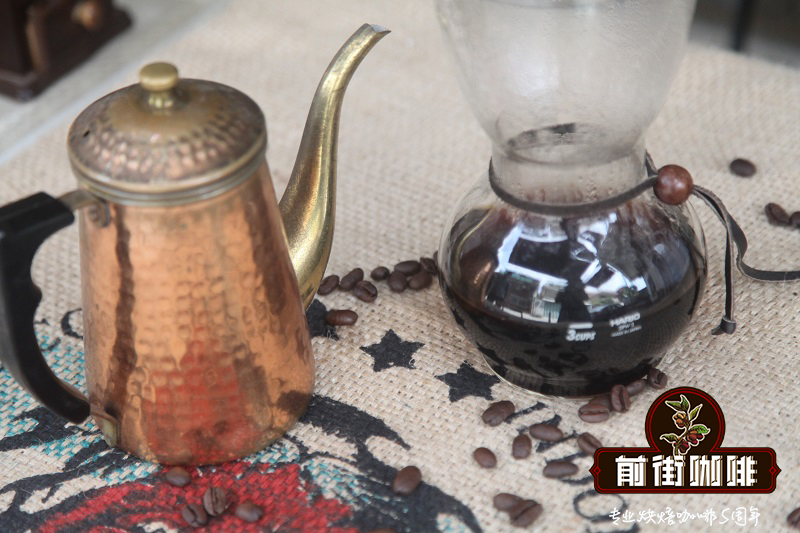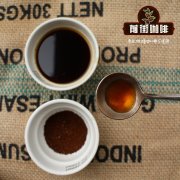Sidamo Gouji sunflower honey G1 coffee beans how to make by hand, Sidamo hand flushing powder ratio is recommended

Professional coffee knowledge exchange more coffee bean information please follow the coffee workshop (Wechat official account cafe_style)
The Sidamo Coffee producing area (Sidama) is located in southern Ethiopia. The industry here is mainly agricultural, and the coffee growing area is located around the East African Great Rift Valley (Great Rift Vallley).
one
Sidamo sunburns nectar
Sidamo, Ethiopia
Origin: Ethiopia
Producing area: Sidamo Guji
Grade: G1
Coffee varieties: original tin card species
Growth altitude: 1850-2000m
Treatment: insolation
Baking degree: medium
Dry fragrance: Magnolia, roasted almonds, lemon, cream chocolate
Wet fragrance: champagne, dried plum, tangerine peel, blueberry, citrus, cream chocolate
Flavor description: the soft acidity of citrus, the bouquet of champagne and the tonality of flowers and dried fruit give this Sidamo a strong taste amplitude, a long finish, cream chocolate and roasted almonds.
one
Producing area
Sidamo coffee has a very diverse flavor. Different soil types, microclimates and countless native coffee species, towering mountains, highlands, plateaus, valleys and plains, diverse topography, and the geology of the area belongs to nutrient-rich, well-drained volcanic soil. the depth of the soil is nearly two meters, and the surface soil is dark brown or brown. The biggest advantage of the area is that the soil fertility is maintained through the circulation of organic matter, using the withered leaves of the surrounding trees or the residual roots of the plants as fertilizer. Therefore, the coffee produced in cities and towns has obvious differences and characteristics.
The production area of Guji Zone has always been a production area worthy of considerable attention, and the development in recent years has also confirmed that the rise of Guji production area is indeed one of the important trends in the development of Ethiopia in recent years. In addition to the beans from the larger producing areas, such as Humbera and Shakespeare, there are also excellent beans from processing plants or even single estates, which are unmatched by the traditional Yega Sheffield producing areas. What's more, in terms of innovative treatment methods, there will also be honey treatment batches. In addition to the recent focus in Gesha Village, the Guji producing area has also become an important hot spot. To understand the trend in Ethiopia, Guji can be said to be a key point that can not be ignored.
two
Characteristics
The taste of Sidama in the sun is close to the smell of flowers, but it is about a little earthy. Light or medium roasting is suitable for individual products, while medium or deep roasting is suitable for blending coffee and good Espresso base. Sidamo Coffee beans are grayish, thick in some places and small in others, with soft and strong acidity, mellow and sweet and spicy. It is one of the courtyard coffees in the highlands of southern Ethiopia. Unlike ordinary African coffee, Sidamo has clear acidity, smooth taste and delicate floral smell.
three
Grade
The Ethiopian administrative region is divided into four grades, the order from big to small is Region, Zone, woreda and kebele. Most of the names of raw coffee beans are named according to this rule. Guji-suntan nectar is located in the southeast of the well-known producing area.
How to make Sidamo Coffee [Guji Honey G1] well?
Qianjie Coffee hand Chong reference: weigh 15g [Guji nectar G1] coffee powder, pour into the grinder to grind moderately, the ground particles are slightly thicker than salt, we use BG bean grinder to scale 5R (standard sieve pass rate 60%), water temperature 90 degrees, V60 filter cup extraction.
The hot water in the hand flushing pot draws a circle clockwise with the center of the filter cup. Start the time when brewing, brew the coffee to 30g in 15 seconds, then stop the water injection, and when the time is up to 1 minute, the second water injection. The second water injection is the same as before, draw a circle clockwise with the center of the filter cup, and the water flow should not rush to the place where the coffee powder is connected with the filter paper, so as not to produce channel effect.
Coffee powder to the outermost circle to set aside a circle, and then another circle to the middle, 2 minutes 20 seconds, to the coffee to 220g, brewing coffee is finished.
| | Ice extract [Guji nectar G1] |
Qianjie Coffee Ice extract [Guji Honey G1] reference:
Sidamo Coffee [Gucci Honey G1], light and medium roasted, BG bean grinder scale 4B, 3 grinding degrees, 20 grams of beans, 87 degrees water temperature steaming for 3 minutes, chemex pot, then ice extract with ice water, total water 200ml
END
Important Notice :
前街咖啡 FrontStreet Coffee has moved to new addredd:
FrontStreet Coffee Address: 315,Donghua East Road,GuangZhou
Tel:020 38364473
- Prev

Sidamo Gurgi Kanisha hand-made Coffee course-how to make good Mokanisha Coffee beans
For more information on coffee beans, please follow the Coffee Workshop (Wechat official account cafe_style) 2018 Coffee Workshop (official account cafe_style) 2018 Coffee Workshop (official account Coffee account cafe_style) 2018 Coffee Workshop (official account Coffee account) 2018 Coffee Workshop (official account Coffee account cafe_style) Coffee Workshop (official account Coffee account) 2018 Coffee Workshop (official account Coffee account cafe_style) Coffee Workshop (official account Coffee account) 2018 Coffee Workshop (official account Coffee account) 2018 Coffee Workshop (official account Coffee account Coffee Information) Coffee Workshop (official account Coffee account) 2018 Coffee Workshop (official account Coffee account Coffee Information) Coffee Workshop (official account Coffee account) 2018 Coffee Workshop (official account Coffee account) 2018 Coffee Workshop (official Local
- Next

What kind of filter cup is suitable for washing Sidamo G1 white cherry coffee beans _ sharing of hand-washed cherry washing parameters
Professional coffee knowledge exchange more information about coffee beans Please follow the coffee workshop (Wechat official account cafe_style) has been practicing hand flushing recently, more beans come into contact with Ethiopia. One of the things that impressed me was a G1 white cherry washing Sidamo. Production area: sidamo varieties: 100% Arabica treatment: washing and baking degree: moderate baking
Related
- Detailed explanation of Jadeite planting Land in Panamanian Jadeite Manor introduction to the grading system of Jadeite competitive bidding, Red bid, Green bid and Rose Summer
- Story of Coffee planting in Brenka region of Costa Rica Stonehenge Manor anaerobic heavy honey treatment of flavor mouth
- What's on the barrel of Blue Mountain Coffee beans?
- Can American coffee also pull flowers? How to use hot American style to pull out a good-looking pattern?
- Can you make a cold extract with coffee beans? What is the right proportion for cold-extracted coffee formula?
- Indonesian PWN Gold Mandrine Coffee Origin Features Flavor How to Chong? Mandolin coffee is American.
- A brief introduction to the flavor characteristics of Brazilian yellow bourbon coffee beans
- What is the effect of different water quality on the flavor of cold-extracted coffee? What kind of water is best for brewing coffee?
- Why do you think of Rose Summer whenever you mention Panamanian coffee?
- Introduction to the characteristics of authentic blue mountain coffee bean producing areas? What is the CIB Coffee Authority in Jamaica?

